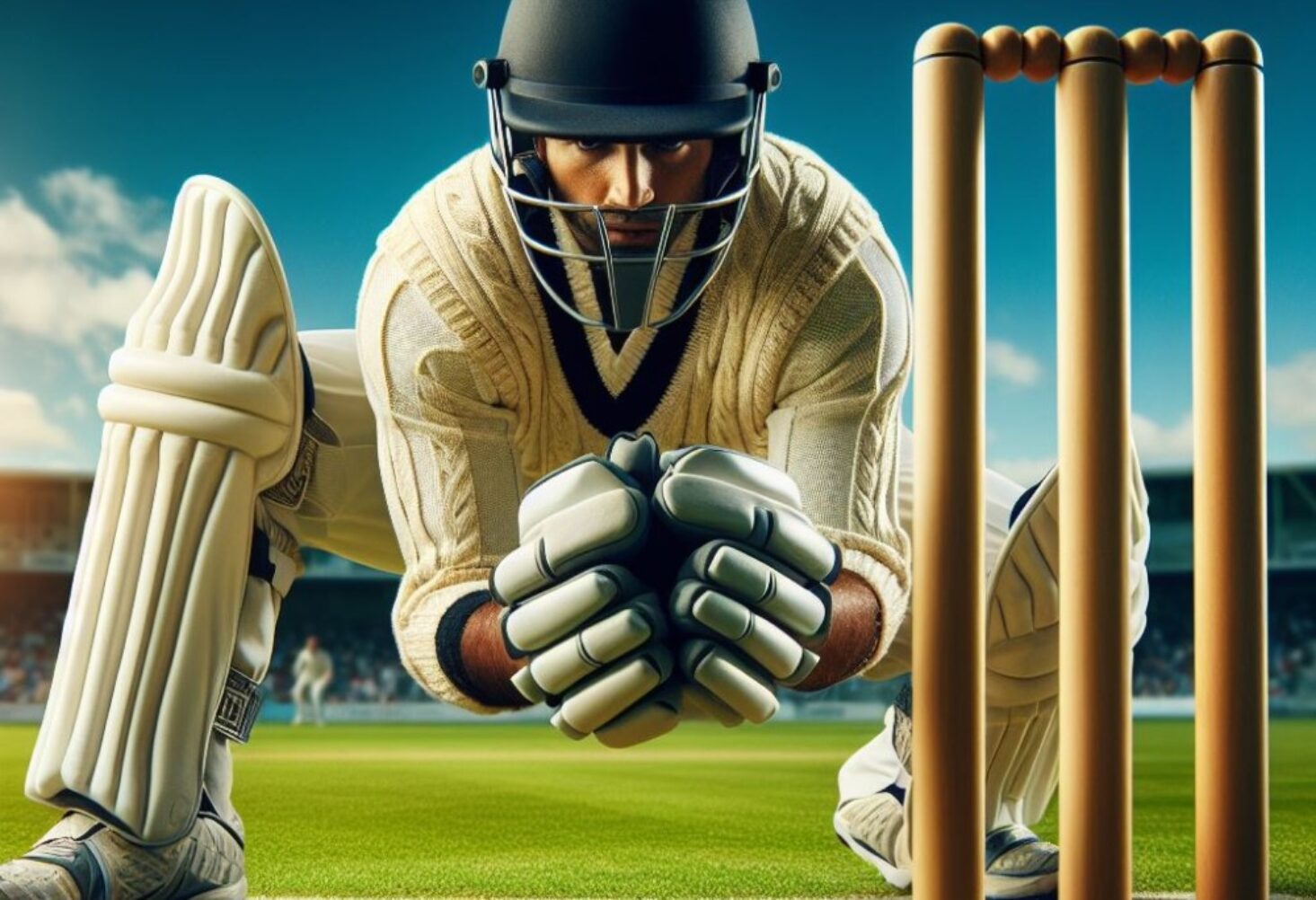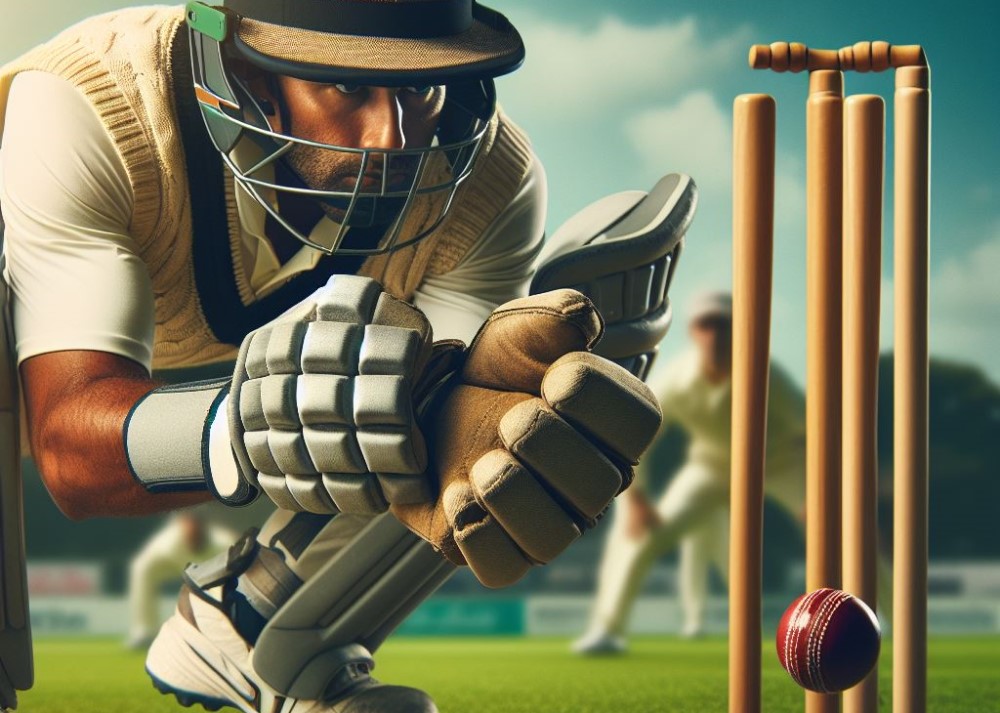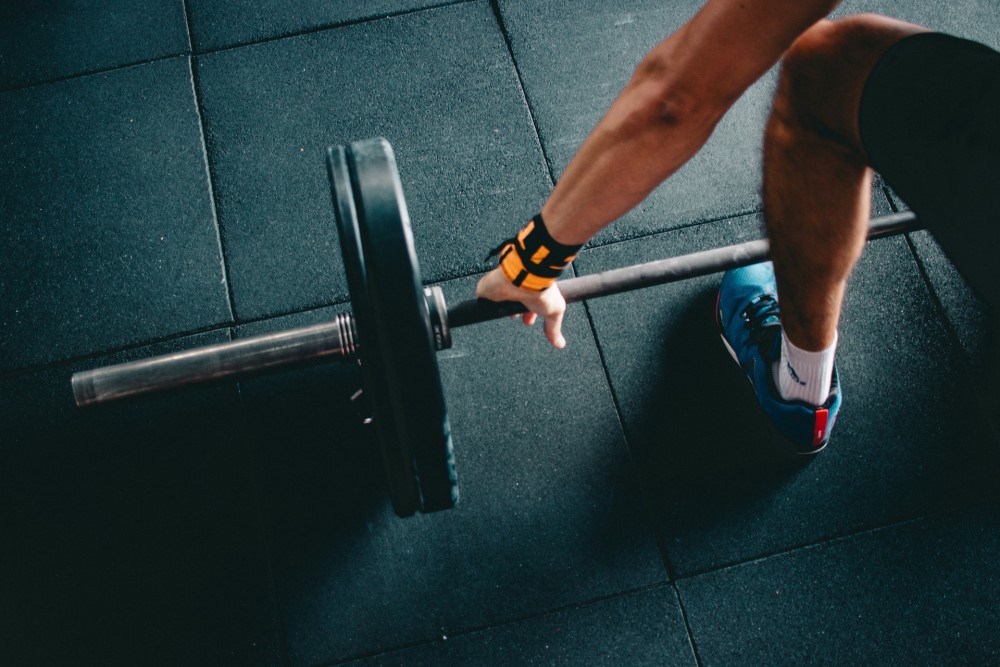
What Are The Best Tips And Drills For Cricket Wicketkeeping
Being a wicketkeeper in cricket requires a unique set of skills and qualities. Wicketkeeping is a crucial position that involves not only catching the ball but also providing constant communication and support to the bowlers and fielders.
Whether you are a beginner or an experienced wicketkeeper, mastering the essential techniques and drills can greatly enhance your performance on the field.
Following effective tips and strategies can help you stay focused, anticipate game situations, and improve your overall wicketkeeping abilities.
In this article, we will explore the essential skills and qualities of a cricket wicketkeeper, the basic techniques involved in wicketkeeping, various drills to improve your skills, and valuable tips to enhance your performance behind the stumps.
So, let’s dive in and discover the best tips and drills for cricket wicketkeeping.
Essential Skills and Qualities for a Cricket Wicketkeeper
When it comes to being a cricket wicketkeeper, there are some essential skills and qualities that can make all the difference on the field. From agility and quick reflexes to good hand-eye coordination, strong communication skills, and unwavering alertness and focus, this section dives into what it takes to excel in this demanding position.
So, get ready to discover the key attributes that make a cricket wicketkeeper truly exceptional.
Agility and Quick Reflexes
- Agility: Focus on agility exercises such as ladder drills and cone drills to improve footwork and quick movements.
- Quick Reflexes: Practice reaction time drills, like reacting to a ball being thrown at different angles and speeds.
- Hand-Eye Coordination: Incorporate hand-eye coordination exercises, such as juggling or playing catch with a partner.
Pro-tip: Regularly practicing agility and quick reflex drills can enhance your performance as a cricket wicketkeeper, allowing you to react swiftly and make crucial saves during matches.
Good Hand-Eye Coordination
To excel in their role as a cricket wicketkeeper, having good hand-eye coordination is crucial. Here are some drills and tips that can help you improve:
- Reaction Time Drills: Practice reacting quickly to the ball by making catches or playing small-sided games where you have to anticipate and react.
- Grip and Hand Placement: Work on developing a solid grip and ensure that your hands are in the correct position to make quick and precise movements.
- Footwork Drills: Focus on having quick and agile footwork to get into position for catches, stumpings, and run-outs.
- Catching and Glove Work Drills: Perform various catching drills to enhance your hand-eye coordination, such as high catches, dives, and close-in catches.
- Diving and Stumping Drills: Practice diving to make difficult saves and work on stumpings to improve your coordination and accuracy.
By regularly incorporating these drills into your training, you can enhance your hand-eye coordination, making you a more effective cricket wicketkeeper.
Strong Communication Skills
Strong communication skills are crucial for a cricket wicketkeeper to efficiently coordinate with bowlers, fielders, and the captain. Here are the key aspects:
- Providing clear and concise instructions to the bowler and fielders.
- Ensuring quick and accurate relay of information regarding field placements and game strategies.
- Continually monitoring and communicating potential threats or opportunities on the field.
- Establishing effective communication with slip fielders and back-up fielders during catches or run-outs.
- Establishing rapport with the bowlers to comprehend their strengths and weaknesses.
- Motivating and encouraging teammates through positive communication.
Alertness and Focus
Alertness and focus are vital aspects for a cricket wicketkeeper. To enhance these crucial attributes, consider the following tips and drills:
- Maintain a high level of concentration at all times to stay fully engaged in the game.
- Improve reflexes and response time by practicing reaction drills.
- Be agile and ready to react to any situation by working on quick feet movements.
- Train your mind to stay focused by using distraction drills that simulate match scenarios.
- Enhance your ability to take catches on the leg side by practicing sideways positioning and quick reactions.
- Ensure opportunities are not missed by working in conjunction with slip fielders to enhance communication.
Basic Techniques for Cricket Wicketkeeping

Discover the foundations of cricket wicketkeeping with these essential techniques. We’ll dive into the secrets of the stance and positioning, explore the art of grip and hand placement, master the footwork and body movement, and uncover the essentials of collecting and handling the ball.
Get ready to level up your wicketkeeping game as we break down each vital aspect of this critical position on the cricket field. Strap on your gloves and let’s jump into the action!
Stance and Positioning
The stance and positioning of a cricket wicketkeeper are crucial for success. Here are some key points to consider:
- Adopt a balanced and athletic stance and positioning with knees slightly flexed, ensuring you are ready to react quickly.
- Position yourself behind the stumps, aligning with the off stump to provide the best chance of taking catches and making stumpings.
- Maintain a low crouch position to enable quick movement and agility.
- Stay on the balls of your feet, ready to move in any direction.
- Keep your gloves up and in front of your body to be prepared for any edges.
Pro-tip: Regularly practice your stance and positioning to develop muscle memory and improve your ability to anticipate and react to the batsman’s movements.
Grip and Hand Placement
To have a strong grip and proper hand placement is crucial for a cricket wicketkeeper. Here are some steps to follow:
- Hold the bat grip firmly, ensuring a solid grip.
- Place the hands close together on the bat handle for better control and stability.
- Position the top hand slightly higher than the bottom hand to maintain a proper grip.
- Ensure that the fingers are securely wrapped around the handle.
- Maintain a relaxed grip while remaining alert and ready to react swiftly.
- Practice gripping and regripping the bat handle to enhance flexibility and dexterity.
Having the correct grip and hand placement provides stability and control, enabling the wicketkeeper to effectively catch and handle the ball.
Footwork and Body Movement
Footwork and body movement are essential for a cricket wicketkeeper to effectively carry out their role behind the stumps. Quick and agile footwork allows the wicketkeeper to swiftly adjust to the line and length of the bowler’s delivery.
Proper body movement helps with balance and positioning, enabling effective dives, catches, and stumpings. Correct weight distribution is important for a stable base and quick reactions in various situations. Maintaining a sideways-on stance provides a clear view of the ball and ensures efficient movement.
The key elements of footwork and body movement in cricket wicketkeeping include flexibility and agility, which allow the wicketkeeper to move laterally and across the crease with speed.
The art of footwork and body movement in cricket wicketkeeping can be traced back to the 18th century when players recognized their importance. Throughout the years, coaches and players have developed drills and techniques to improve these skills.
Today, wicketkeepers continue to train and practice dedicatedly to enhance their footwork and body movement, aiming to excel in the sport.
Collecting and Handling the Ball
To effectively collect and handle the ball as a cricket wicketkeeper, follow these steps:
- Position yourself behind the stumps, with your body slightly sideways on towards the leg stump.
- Keep your eyes focused on the ball at all times and maintain a low crouch position.
- React quickly and move towards the ball with quick feet and agile movements.
- Ensure your hands are positioned correctly with a relaxed grip and fingers facing upwards.
- Use soft hands to collect the ball, absorbing the impact and preventing any chances of it popping out.
- Practice collecting and handling the ball in different situations, such as when the ball swings, veers off the bat, or bounces unusually.
- Develop a strong throwing technique to quickly return the ball to the bowler or fielder.
To enhance your skills in collecting and handling the ball, consider the following suggestions:
- Participate in wicketkeeping coaching courses to refine your technique.
- Practice specific drills like reaction time drills, catching practice, and footwork exercises.
- Work on your agility and fitness to maintain the required level of alertness during matches.
Drills to Improve Cricket Wicketkeeping Skills

Looking to up your cricket wicketkeeping game? Get ready to dive into some exciting drills to enhance your skills behind the stumps. From reaction time drills to footwork techniques, catching and glove work exercises to diving and stumping practices, we’ve got you covered.
So, grab your gloves, put on your pads, and let’s explore these dynamic drills to take your wicketkeeping to the next level!
Reaction Time Drills
Reaction time drills are essential for cricket wicketkeepers to develop quick reflexes and responsiveness. Here are some drills to improve reaction time:
- Ball Throwing: A coach throws balls randomly towards the wicketkeeper, who has to react quickly and catch them.
- Paddle Bat Drills: The wicketkeeper stands slightly away from the stumps while the coach hits balls towards them with a paddle bat. The wicketkeeper must react and try to catch or block the ball.
- Visual Cue Reaction: The wicketkeeper focuses on the coach’s hand or an object, and when it moves or drops, they must react by moving towards the ball.
- Training with Tennis Balls: By using tennis balls, which are smaller and move faster, the wicketkeeper can enhance their reaction time and hand-eye coordination.
To improve reaction time, consistency and repetition are key. Regular practice and incorporating these reaction time drills into training sessions will sharpen a wicketkeeper’s reflexes on the field. Keep challenging yourself and strive for continuous improvement.
Footwork Drills
Developing proper footwork is crucial for a cricket wicketkeeper to move swiftly and effectively. Here are some footwork drills to improve your skills:
- Quick Steps: Practice taking fast and small steps to react quickly to different game situations.
- Side-to-Side Movement: Move laterally to cover the stumps and adjust your positioning based on the batsman’s technique.
- Back and Forward Motion: Footwork drills help wicketkeepers improve their agility and enhance their ability to take quick and accurate catches.
- Shuffle and Dive: Combine footwork with diving techniques to reach for catches in the catching area.
Fact: Footwork drills help wicketkeepers improve their agility and enhance their ability to take quick and accurate catches.
Catching and Glove Work Drills
- Catching and glove work drills are essential for improving finger strength and dexterity. Incorporate exercises such as squeezing a stress ball or using a grip-strengthening device.
- To enhance reflexes and response time, it is crucial to practice reaction time drills. Try catching a ball from different angles to train your abilities.
- Positioning the gloves correctly is key to ensure maximum surface area for catching. Work on glove positioning drills to perfect your technique.
- Simulate high-pressure catching situations by creating game-like scenarios with increased difficulty. Catching under pressure drills prepare you for challenging situations.
- To get into the best position for catching, focus on agility and quick foot movement. Incorporate footwork drills to improve your overall performance.
Diving and Stumping Drills
- Incorporate diving: Set up cones or markers to simulate the trajectory of a ball and practice different angles and distances as part of your diving and stumping drills.
- Include stumpings: Improve your reflexes and timing by practicing stumpings with a partner, focusing on quick glove work and efficient footwork during these essential drills.
- Engage in reaction drills: Enhance your agility and responsiveness by using a ball machine or having a partner throw balls randomly, forcing you to react quickly and make diving or stumping saves as part of your drills.
- Include footwork drills: Incorporate exercises that involve lateral movement, quick changes in direction, and hopping drills to enhance your agility and quickness during these essential diving and stumping drills for cricket wicketkeeping.
By incorporating these diving and stumping drills into your training routine, you can enhance your wicketkeeping skills and become a valuable asset to your team.
Tips and Strategies for Cricket Wicketkeeping
When it comes to cricket wicketkeeping, mastering the art requires a combination of skill, technique, and strategy. In this section, we’ll uncover the top tips and strategies that are essential for success behind the stumps.
From effective communication with bowlers and fielders to the importance of game analysis and anticipation, we’ll explore the various facets that make a wicketkeeper stand out.
We’ll delve into the significance of fitness and agility training, as well as the mental preparation and concentration required for a wicketkeeper to shine on the field. Get ready to level up your wicketkeeping game!
Communication with Bowlers and Fielders
Communication with bowlers and fielders is crucial for a cricket wicketkeeper.
- Clear Instructions: Ensure bowlers and fielders understand the wicketkeeper’s calling for catches or run-outs.
- Coordination: Work as a cohesive unit by communicating field placements and tactics based on the batsman’s technique.
- Confidence Boost: Provide encouragement and support to bowlers and fielders, boosting their morale and performance.
- Quick Decision-making: React swiftly to assess fielding positions, taking into account the bowling speed and the batsman’s moves.
In a historic match between Australia and England in 1932, wicketkeeper Bert Oldfield‘s effective communication with the bowlers and fielders played a vital role in securing a victory for Australia. Oldfield’s clear instructions and coordination led to crucial dismissals, showcasing the significance of communication in wicketkeeping.
Game Analysis and Anticipation
Game analysis and anticipation are essential skills for a cricket wicketkeeper to excel in the game. To enhance these skills, here are some tips:
- Engage in game analysis by studying the batsman’s technique and previous performances to anticipate their shot selection.
- Improve your anticipation by analyzing the bowler’s bowling speed, line, and length to predict the ball’s trajectory.
- Stay aware of the fielding positions and adjust your positioning accordingly to cover potential gaps, thus demonstrating anticipation and game analysis.
- Communicate effectively with the bowlers and fielders to strategize and make quick decisions, showing the importance of game analysis and anticipation in teamwork.
- Watch cricket matches to observe different situations and learn from experienced wicketkeepers, developing your game analysis and anticipation skills.
- Maintain a focused and alert state of mind throughout the game to react quickly to unexpected situations, which is crucial for accurate game analysis and anticipation.
- Anticipate the ball swinging in the air or deviating off the pitch to make accurate catches or stumpings, demonstrating your game analysis and anticipation abilities.
- Constantly work on fitness and agility training to improve speed and agility behind the stumps, thereby enhancing your game analysis and anticipation skills.
Fitness and Agility Training
Fitness and agility training are essential for cricket wicketkeepers to enhance their performance on the field. Here are some key aspects to focus on:
- Cardiovascular Fitness: Improve endurance with activities like running, cycling, or swimming to keep up with the demands of the game.
- Strength Training: Develop overall strength with exercises such as squats, lunges, and core workouts to maintain stability and power.
- Agility Drills: Incorporate ladder drills, cone drills, and shuttle runs to improve footwork, speed, and quick reactions.
- Flexibility and Mobility: Engage in stretching exercises and yoga to increase range of motion and prevent injuries.
- Balance and Coordination: Practice balancing exercises to improve stability and hand-eye coordination, which are crucial for successful wicketkeeping.
Remember to consult with a professional coach or trainer to design a customized fitness and agility training program. This will ensure proper technique and safety for cricket wicketkeepers.
Mental Preparation and Concentration
To excel in cricket wicketkeeping, mental preparation and concentration are key. Here are some tips to enhance these skills:
1. Maintain focus: Stay mentally engaged throughout the game, anticipate the batsman’s technique, and adjust accordingly.
2. Visualization: Visualize different scenarios and practice how you would react in each situation. This helps improve decision-making and reaction time.
3. Positive self-talk: Develop a positive mindset and reinforce confidence. Use affirmations to stay focused and motivated.
4. Concentration drills: Incorporate activities that test your ability to concentrate. For example, practice catching with distractions to simulate match intensity.
5. Mental training courses: Attend wicketkeeping coaching courses that specifically address mental preparation and concentration.
In the 2005 Ashes series, England wicketkeeper, Geraint Jones, displayed exceptional mental preparation and concentration. He held several crucial catches and made important contributions with the bat, earning the nickname “The Man with the Golden Gloves.” His mental strength became an inspiration for wicketkeepers around the world.
Frequently Asked Questions
What are some basic technique drills for cricket wicketkeeping?
Some basic technique drills for cricket wicketkeeping include practicing catching consecutive throws from a measured distance behind the stumps, working on leg side takes, and improving reaction time with drills such as the distraction take and the high bounce take.
What are some specific drills to improve wicketkeeper skills?
Specific drills to improve wicketkeeper skills include the triangle formation drill, where one player in the middle tries to catch the ball thrown by the other two players, and the drill where the wicketkeeper tries to catch the ball before it bounces after being thrown by the player behind. Additionally, practicing long catches and poor throw-half volley practice can enhance skills.
How can wicketkeepers enhance their match intensity and work capacity?
Wicketkeepers can enhance their match intensity and work capacity by participating in cricket specific conditioning drills, such as glovework standing up and back, working as part of a team of four during drills, and warming up with the opening bowlers to build rhythm.
What are some coaching tips for wicketkeepers?
Coaching tips for wicketkeepers include encouraging them to stand up to seam bowling when the pitch is flat and the batsmen are aggressive, to play for the edge when catching, and to provide team and individual encouragement to keep the team focused and motivated during matches.
Why should wicketkeepers consider a crouch position with knees bent less and feet flat on the floor?
Wicketkeepers should consider a crouch position with knees bent less and feet flat on the floor as it reduces pressure on the knees, extends their career, provides better balance, and reduces the risk of injuries.
How can wicketkeepers contribute to the team’s overall performance?
Wicketkeepers can contribute to the team’s overall performance by serving as back-up fielders, shouting support and encouragement, praising good cricket, and using humor to relax the team. Their role is not only limited to their skills as a wicketkeeper but also extends to keeping the team focused and motivated.





